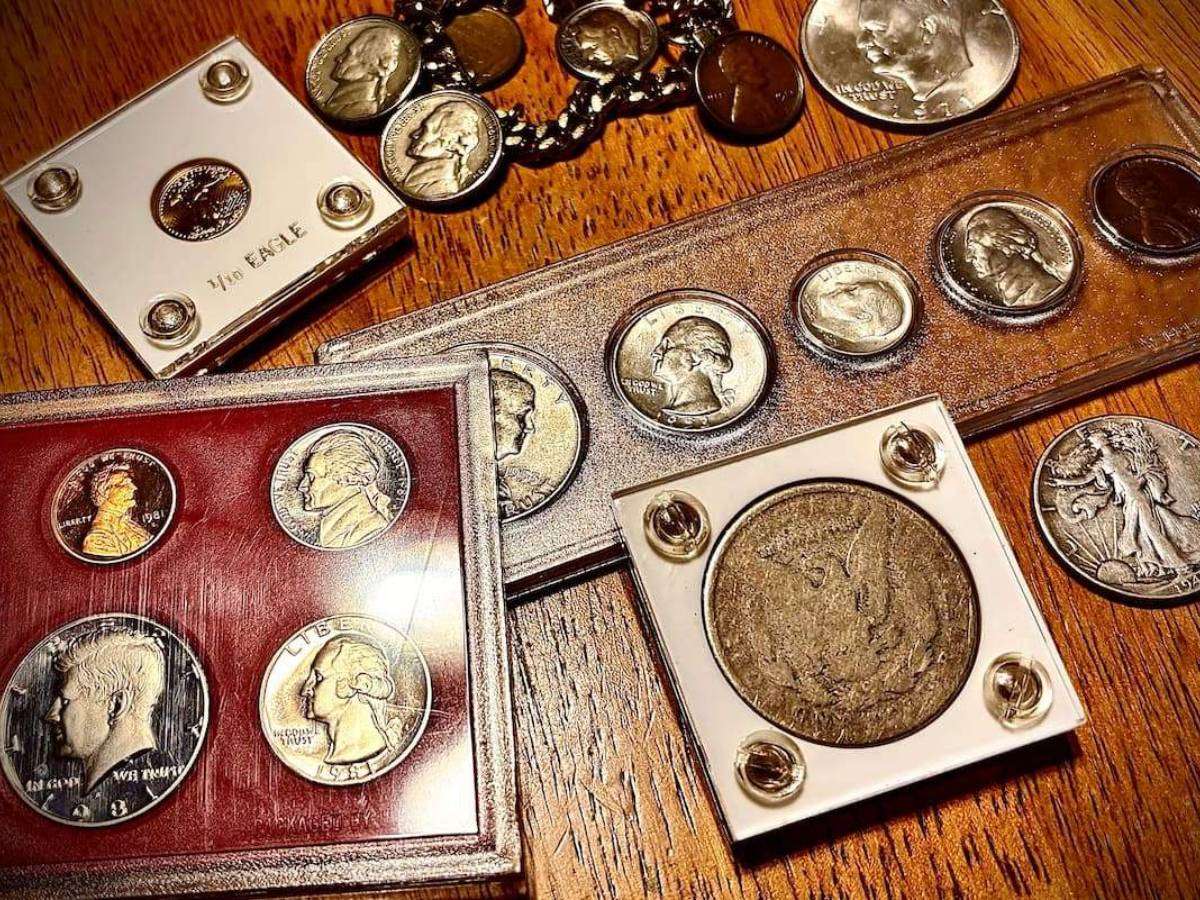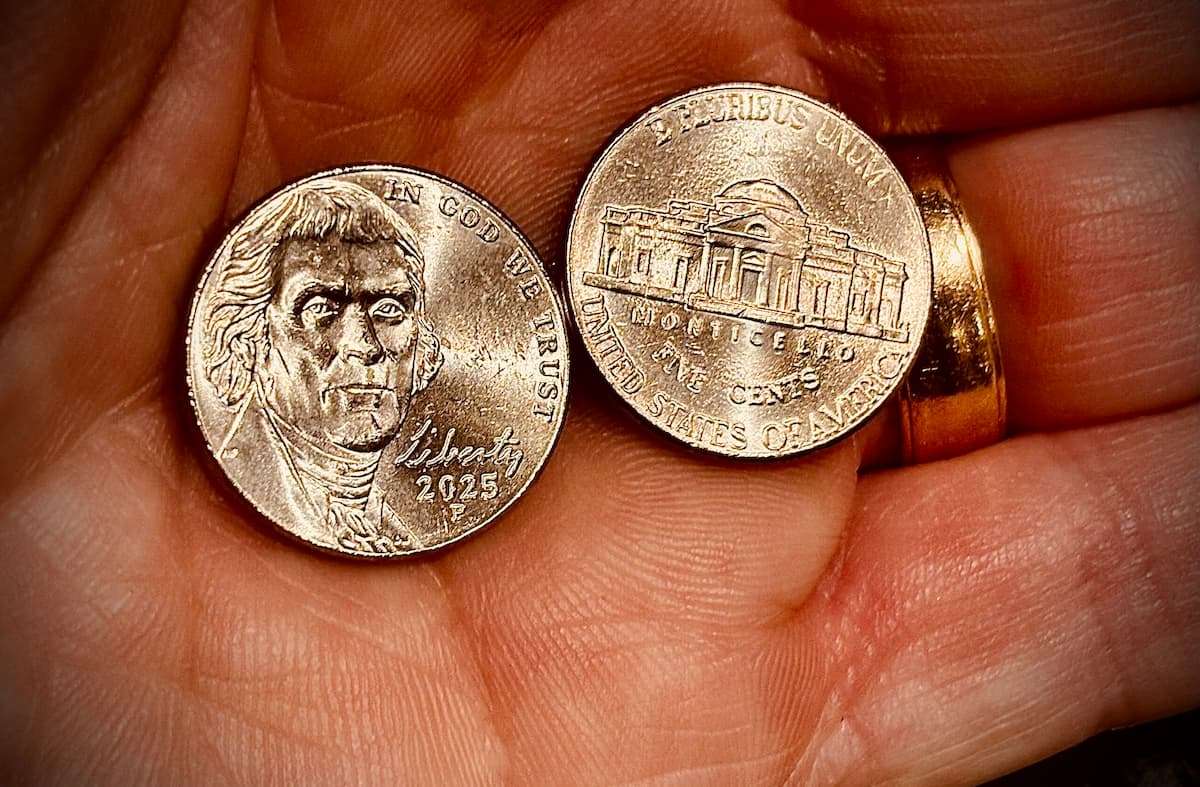My wife and I love looking through rolls of pennies.
Our goal is simple: to find rare and valuable pennies in penny rolls. And the list of worthy finds is long!

In this article, we will cover:
- Reasons To Search Penny Rolls
- Which Old Pennies Are Valuable
- Key Date & Semi-Key Date Pennies To Look For
- Error Pennies You’re Most Likely To Come Across
- Design Varieties On Pennies To Look For
Why You Should Look Through Penny Rolls
I’ve been searching penny rolls since my earliest days as a coin collector in the early 1990s.
Nobody showed me how to do this. I just thought it was more efficient to look through rolls of coins to find the pieces I wanted to fill my coin folders versus waiting to land certain coins in pocket change.
It wasn’t until I was older that I first found out online that searching through coin rolls was “a thing.”
And a thing it is, let me tell you…
I’ve found all kinds of cool coins looking through bank rolls. Nothing super-duper valuable or extremely rare. But MANY old coins, valuable coins, and even some errors and varieties.
Searching penny rolls is a fun, low-budget way to collect coins.
Pennies To Look For In Coin Rolls
Some of the rare and valuable pennies you may find searching through rolls include:
- Old dates
- Key dates and semi-key dates
- Errors
- Varieties
I know that’s a pretty broad list. So, let me break down those 4 categories of pennies — so you’ll have a better idea of exactly which pennies you should be looking for.

Important Things You Need When Searching Penny Rolls:
- A coin scale – see my favorite scale for weighing coins
- A magnifying glass – here’s how to choose a magnifying glass for inspecting coins
- A basic understanding of coin grading – here are some tips to help you grade coins yourself
- Old Pennies To Look For
What constitutes an old penny?
Some might tell you they look for pennies that are older than 1959 — the year the first Lincoln Memorial penny was released.
Others will search for all pennies older than 2009, which is when the 4 special commemorative designs of the Lincoln Bicentennial program came out. (The Union Shield penny started in 2010.)
As for my wife and me, we look for all pennies older than 1983.
Why? Because that was the first year that all circulating Lincoln pennies were struck from a zinc-based metallic composition.
Now, a lot of people will say that you should concentrate only on pennies that are dated 1981 and older. And that does make sense — since all Lincoln Memorial pennies struck from 1959 through 1981 were made from a 95% copper alloy. After all, copper pennies are worth more than face value.
But stopping at 1981 when looking for copper pennies overlooks the 1982 pennies — and many of those were made from the traditional copper alloy, too.
Here’s how to tell if you have a copper penny versus a zinc penny.
- Key & Semi-Key Pennies To Look For
What are key date and semi-key date pennies?
These words describe pennies that are rare or scarce, respectively.
Key dates are the difficult dates that collectors need to complete their sets of coins. For pennies, key dates include:
- 1909-S VDB
- 1909-S
- 1914-D
- 1931-S
Semi-key dates aren’t as rare or expensive as the key dates, but they’re still scarce and worth a lot of money. Among the semi-key Lincoln pennies are:
- 1910-S
- 1911-S
- 1912-S
- 1913-S
- 1914-S
- 1922-D
Of course, your chances of finding any of these rare Lincoln Wheat pennies in rolls aren’t all that great.

That’s not to say you can’t find them while searching through rolls… But you just need to manage your expectations when searching through penny rolls for any Wheat cents. You absolutely have a chance at finding ANYTHING inside each roll of pennies. However, you can’t let yourself get too bummed if you’re not landing a valuable Wheat penny each time you open a penny roll.
Here’s a list of the most valuable U.S. pennies to keep.
- Error Pennies To Look For
My wife and I haven’t landed any 1909-S VDB pennies in rolls, and we don’t expect to anytime soon.
However, you have a reasonable chance of finding error pennies on occasion. You just have to know what to look for.
Most of the unusual pennies people have shown me aren’t errors at all, but rather post-mint damage coins.
Here are some of the error pennies you should be keeping an eye out for in penny rolls:
- Off-center pennies — These errors occurred when the planchet (a prepared coin blank) wasn’t properly seated between the dies or the dies were misaligned. The result? The coin’s design is struck off center. Rarity and value for off-center coins largely depends on how much of the design is missing. A penny that was struck 3% to 5% off center isn’t generally worth as much as one missing about 50% of its design. An off-center penny that still shows a complete date is more desirable than one missing its date or showing only a partial date.
- Die crack pennies — When the die, which imparts a design onto a coin, begins breaking due to wear and tear, the fissures in the die result as raised lines on the coins it strikes. Major die cracks on coins can be worth a lot of money. Two particularly collectible kinds on pennies are cuds and BIEs. A cud is a raised, flattish blob of metal attached to the rim. A BIE penny is so called because of the appearance of a little vertical line between the “B” and “E” of “LIBERTY.”
- Broadstrike pennies — When a coin is struck, it usually is retained inside a collar that helps keep the coin in place and helps form the raised rim around the perimeter of the coin. When the coin is struck outside of its retaining collar, it tends to flatten out like a pancake. These coins are known as broadstrikes, and they’re a very collectible type of error.
- Varieties On Pennies To Look For
A variety is a type of design variance that either was intentional or unintentional.
In so many cases, the unintentional varieties are rarer and more valuable. And those are the kinds I really want you to focus on when looking through rolls of pennies. In fact, I’ll even go so far as to say that varieties represent some of the biggest value potential when it comes to looking for rare and valuable pennies in rolls.
Some of the most valuable penny varieties you should be searching for are:
- 1969-S doubled die
- 1970-S small date
- 1982-D small date copper
- 1983 bronze
- 1983-D bronze
- 1984 doubled ear
- 1989-D bronze
- 1990-D bronze
- 1992 Close AM
- 1992-D Close AM
- 1995 doubled die
- 1998 Wide AM
- 1999 Wide AM
- 2000 Wide AM
Is Coin Roll Hunting Profitable?
The simple answer is that it can be. Technically, every coin you find that is worth more than face value (including any and all copper pennies you land) represent a profit.
But I know that sounds vague. And that’s because I’m always honest. I’m not going to tell you that if you buy a box of penny rolls from the bank today, you’ll be cashing in rare and valuable pennies at the coin dealer near you tomorrow.
Having said that, I have heard many legitimate stories of people who have found extremely rare and valuable pennies in rolls — including:
Each of those coins is worth thousands of dollars apiece.
Here’s a good visual comparing Close AM pennies and Wide AM pennies.
So, why do my wife and I search through rolls of pennies?
Because we enjoy the fun of looking for rare and valuable pennies. But we aren’t counting on the fact that we’re going to make a lot of money looking through rolls of pennies. Yet we know there’s a chance — a decent chance, even — that we could land some coins worth at least a little bit more than their face value.
That, and the great times we have searching through rolls of coins together, makes coin roll hunting profitable for her and me.




